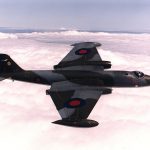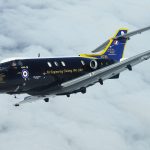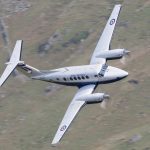System Description:
Pneumatic boots are installed on the leading edges of the wings, vertical stabilizer and horizontal stabilizer. During normal operation, when the system is off, the two engine-driven pneumatic pumps apply a constant suction (of 4.5 to 5.5 psi) to the boots to ensure that the leading edges are smooth and streamlined.
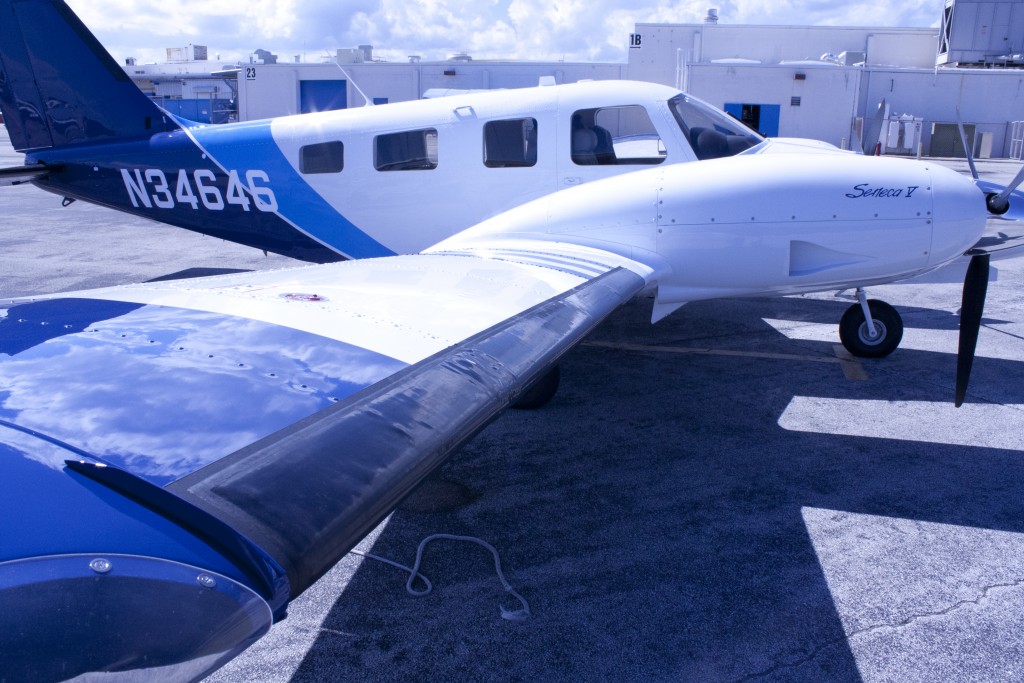 When the SURF DEICE button is pressed, a system timer is activated that energizes the pneumatic pressure control valves so that the boots inflate to 17 psi. The boots expand and cause any ice attached to the leading edges to break off and the flying surfaces to retain their aerodynamic form. After 6 seconds, the air pressure is released and the boots are sucked back into their normal position.
When the SURF DEICE button is pressed, a system timer is activated that energizes the pneumatic pressure control valves so that the boots inflate to 17 psi. The boots expand and cause any ice attached to the leading edges to break off and the flying surfaces to retain their aerodynamic form. After 6 seconds, the air pressure is released and the boots are sucked back into their normal position.
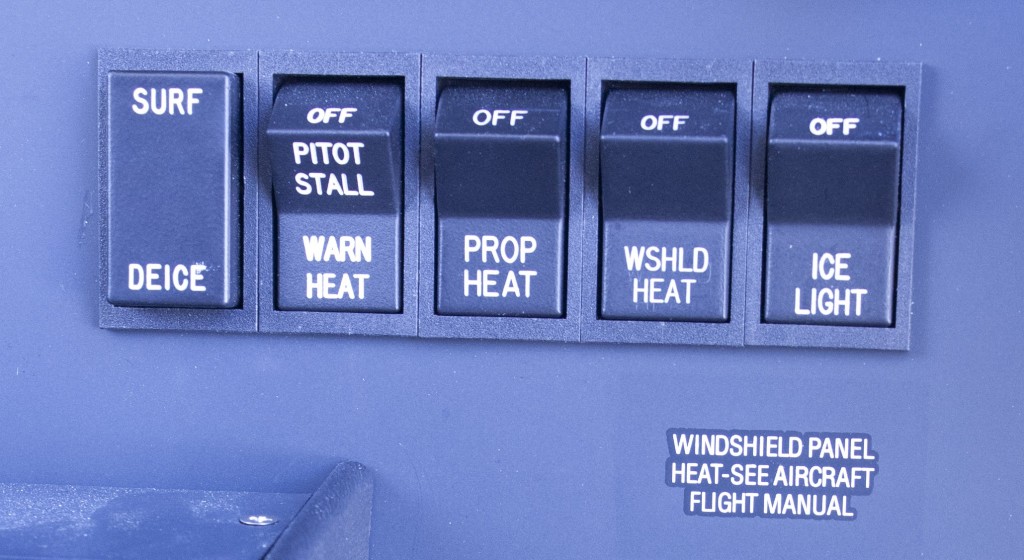
When in operation, a white SURF DEICE ON message appears on the CAS while the boots are inflated, and disappears when they become deflated.
Limitation for use:
Important Note: “The pneumatic boots must be cleaned regularly for proper operation in icing conditions”. (POH page 9-30)
It is possible that, if the surface of the pneumatic boots are dirty, ice attaches itself to the surface and may not be properly removed when the boots are operated. Therefore, before flight in icing conditions, check:
“Surface De-Ice Boots …. VERIFY CLEAN and NO DAMAGE”
Warning: “Do not cycle the pneumatic boots with less than 1/4 inch of ice accumulation; operation of the boots with less than 1/4 inch (0.7 cm) of ice accumulation can result in failure to remove the ice”.
Inflating the pneumatic boots with less that 1/4 inch of ice accumulation can create a cavity between the boots and the ice that results in failure to remove ice during future attempts.
Do not allow more than 1/2 inch of ice to accumulate. The boots may be unable to remove thicknesses of ice greater than 1/2 inch (1.3 cm).
You must therefore be very vigilant once ice starts to form on the wings; regularly check and aim to use the SURF DEICE system whenever approximately 1 cm of ice has developed.
Testing the system:
The system must be tested on the ground, after engine start, before flight into possible icing conditions. The test should be conducted as follows:
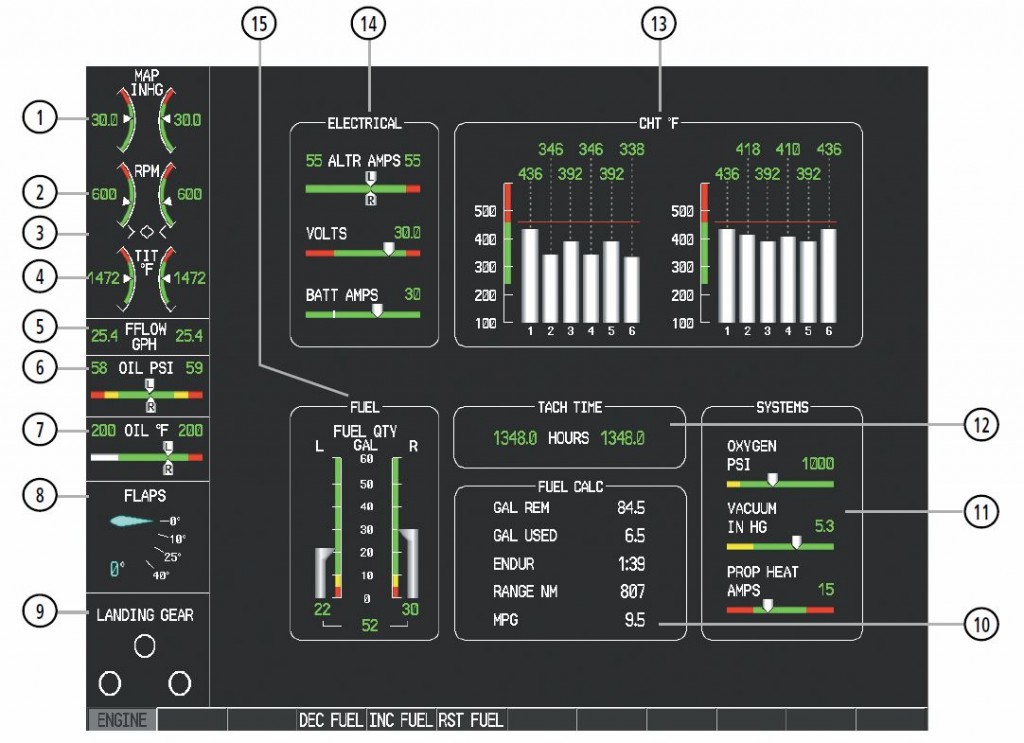
- Select the MFD Engine page and check that the VACUUM IN HG gauge (SYSTEMS box Item 11) is in the green band (usually 4.5 to 5.5 ins).
- Press the SURF DEICE button to initiate the system.
- Visually check for proper boot inflation.
- When fully inflated, check that the white SURF DEICE ON message appears in the CAS window.
- Ensure that no yellow SURF DEICE FAIL or VAC FAIL messages appear in the CAS window.
- Once the white SURF DEICE ON message disappears, visually check that the boots have fully deflated.
It is occasionally possible that the boots appear to inflate, but the white SURF DEICE ON message does not appear – the yellow SURF DEICE FAIL message appears instead. If that happens, it may be due to the vacuum pump output being low because the engine RPM is too low. Experience has shown that once the engine RPM has been increased to approximately 1300 RPM the system will test satisfactorily and any failure message will disappear.

